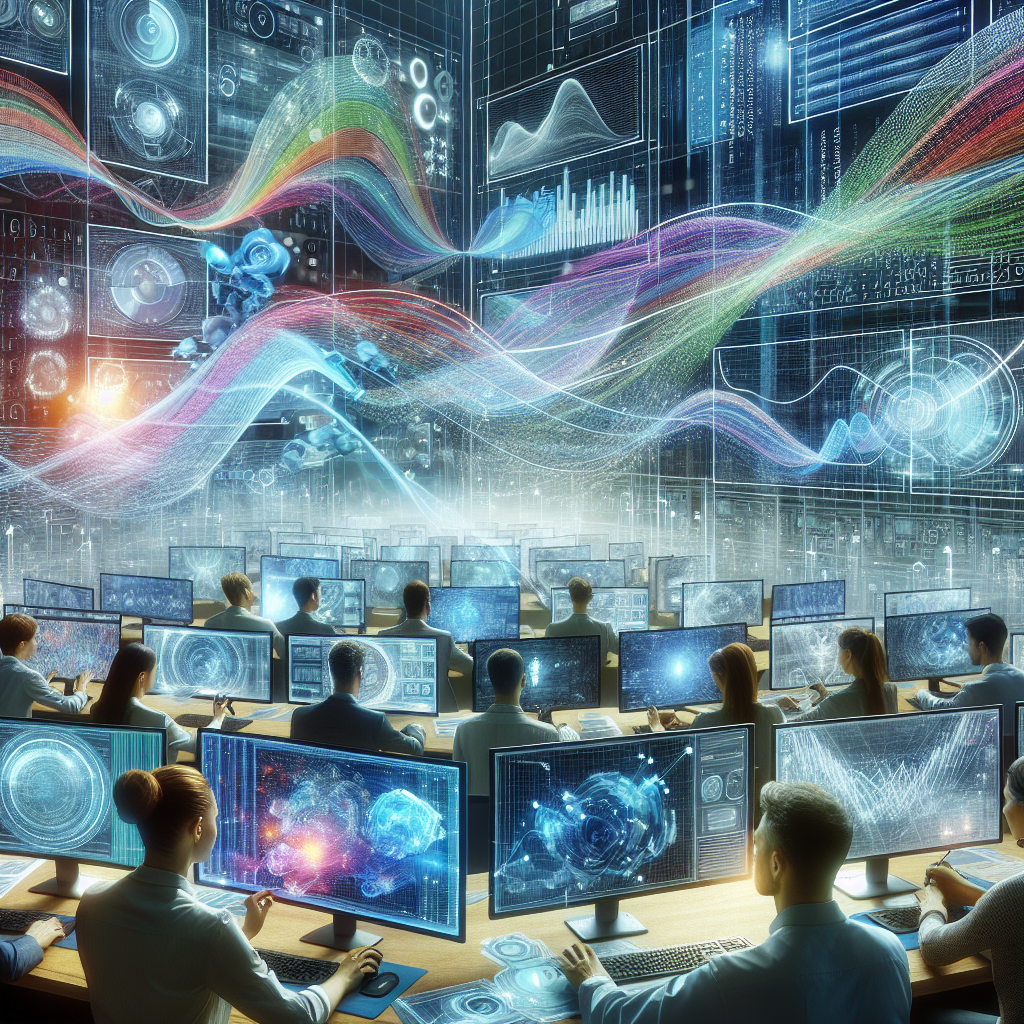In recent years, artificial intelligence (AI) has made significant advancements in various fields, including data visualization. One exciting development in this area is the use of generative AI techniques to create visually appealing and informative data visualizations. Generative AI refers to a type of AI that can generate new content, such as images, videos, or even text, based on patterns and characteristics learned from existing data.
Data visualization is the process of representing data graphically to help understand and interpret complex information. It is an essential tool for businesses, researchers, and decision-makers to gain insights and make informed decisions. Traditionally, data visualization has been created manually by designers or analysts using tools like Tableau, Power BI, or D3.js. However, with the advent of generative AI, the process of creating data visualizations is becoming more automated and innovative.
One of the key benefits of using generative AI in data visualization is its ability to generate unique and creative visualizations that may not have been possible or considered by human designers. By analyzing large datasets and learning patterns, generative AI algorithms can create visualizations that highlight interesting trends, outliers, or correlations in the data. This can lead to new insights and discoveries that may not have been apparent through traditional visualization techniques.
Generative AI can also help speed up the process of creating data visualizations, especially for large and complex datasets. By automating the design process, generative AI algorithms can quickly generate multiple visualizations, allowing users to explore different perspectives and insights from the data. This can be particularly valuable for organizations that need to analyze and visualize large amounts of data in a short amount of time.
Another advantage of using generative AI in data visualization is its ability to adapt and evolve over time. As the AI algorithms learn from new data and feedback, they can improve their ability to generate more accurate and relevant visualizations. This can help users uncover new insights and trends in the data, leading to better decision-making and problem-solving.
There are several ways in which generative AI can be used in data visualization. One common approach is to use generative models, such as generative adversarial networks (GANs) or variational autoencoders (VAEs), to generate new visualizations based on existing data. These models can learn the underlying patterns and structures in the data and generate new visualizations that capture these patterns in a visually appealing way.
Another approach is to use generative AI to assist human designers in creating data visualizations. For example, generative AI algorithms can suggest different design options, layouts, or color schemes based on the data and user preferences. This can help designers explore new ideas and create more engaging and effective visualizations.
Overall, the potential of generative AI in data visualization is vast and exciting. By leveraging the power of AI to automate and enhance the process of creating data visualizations, organizations can gain new insights, make better decisions, and communicate complex information more effectively.
FAQs:
Q: How does generative AI differ from traditional data visualization techniques?
A: Traditional data visualization techniques involve manual design and creation of visualizations by human designers or analysts. Generative AI, on the other hand, uses algorithms to automatically generate new visualizations based on patterns and characteristics learned from existing data. This can lead to more creative and innovative visualizations that may not have been considered by human designers.
Q: What are some examples of generative AI in data visualization?
A: One example of generative AI in data visualization is the use of GANs to generate new images or visualizations based on patterns learned from existing data. Another example is the use of VAEs to create interactive and dynamic visualizations that adapt to user input or preferences.
Q: How can generative AI help organizations with data visualization?
A: Generative AI can help organizations create visually appealing and informative data visualizations more quickly and efficiently. By automating the design process and generating new insights from large datasets, generative AI can help organizations make better decisions and communicate complex information more effectively.
Q: What are some challenges of using generative AI in data visualization?
A: One challenge of using generative AI in data visualization is ensuring the accuracy and reliability of the generated visualizations. Since generative AI algorithms learn from existing data, there is a risk of bias or inaccuracies in the generated visualizations. It is important for organizations to validate and verify the results of generative AI algorithms to ensure they are reliable and accurate.
Q: How can organizations get started with generative AI in data visualization?
A: Organizations looking to explore the potential of generative AI in data visualization can start by experimenting with existing generative AI tools and frameworks, such as GANs or VAEs. They can also work with data scientists or AI experts to develop custom algorithms tailored to their specific needs and datasets. By experimenting and iterating with generative AI techniques, organizations can unlock new insights and possibilities in data visualization.

